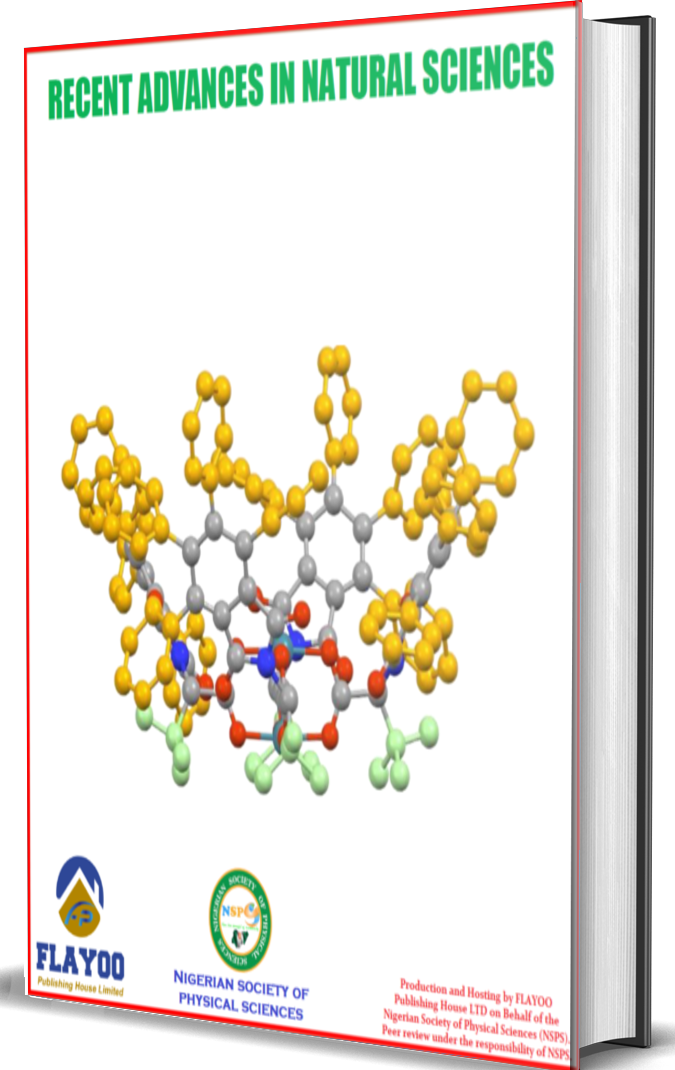Journals
-
Recent Advances in Natural Sciences
Recent Advances in Natural Sciences (RANS) is an open access journal, publishing original research from across all areas of Natural Sciences. It is published biannually (June and December). Production and Hosting is by FLAYOO Publishing House LTD on behalf of the Nigerian Society of Physical Sciences (NSPS). Peer review under responsibility of NSPS. With the idea that making research openly available to the public promotes better global knowledge exchange, this journal offers direct open access to its contents, i.e., all the articles published in this journal are free to access immediately from the date of publication. RANS is available in print and online. The language used in this journal is English.
ISSN(Print): 1596-0544
ISSN (Online): 1596-0757 -
Proceedings of the Nigerian Society of Physical Sciences
Welcome to the Proceedings of the Nigerian Society of Physical Sciences!
As the premier platform for showcasing cutting-edge research and innovative discoveries in the field of physical sciences, we are delighted to welcome you to our digital space. Our proceedings serve as a vital repository of knowledge, capturing the insights and contributions of esteemed researchers, scholars, and practitioners from across Nigeria and beyond.
Within these pages, you will find a diverse array of scholarly works presented at our esteemed conferences, spanning a wide spectrum of disciplines within the physical sciences. From physics and chemistry to astronomy and geology, our proceedings encompass the latest advancements and breakthroughs that are shaping the future of scientific inquiry.
Our commitment to excellence extends to the rigorous peer-review process undertaken by our esteemed panel of experts, ensuring that only the highest quality research receives a place within our proceedings. As a result, readers can trust in the reliability and integrity of the content presented here.
Whether you are a seasoned researcher seeking to stay abreast of the latest developments or a curious enthusiast eager to explore the frontiers of scientific discovery, the Proceedings of the Nigerian Society of Physical Sciences offers a wealth of knowledge and insight to enrich your understanding.
We invite you to delve into our archives, explore our latest publications, and join us on a journey of exploration and discovery. Together, let us push the boundaries of knowledge and inspire future generations of scientists to pursue their passions and make meaningful contributions to the world of physical sciences.
Welcome to our community, where curiosity knows no bounds, and the pursuit of knowledge is celebrated.


